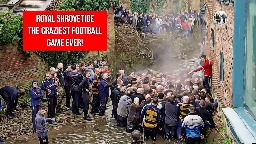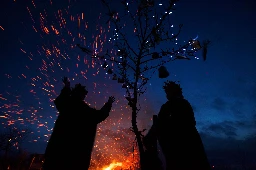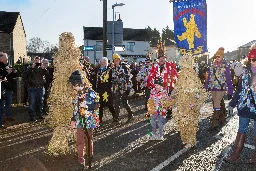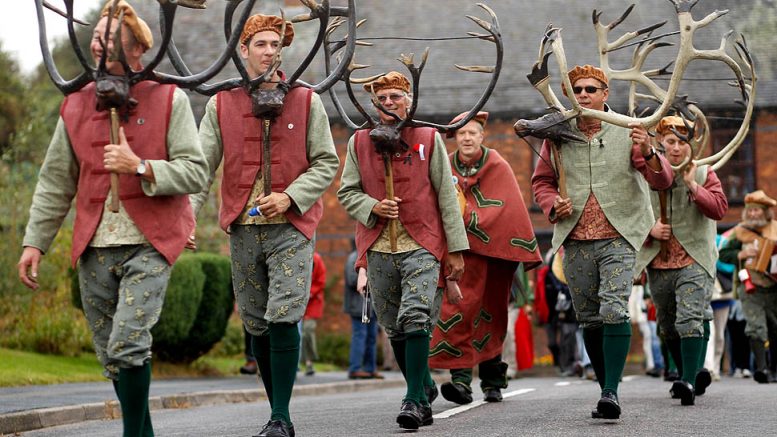
British folk traditions
- Shin-kicking world champion defends crown after training by hitting his legs with a hammerwww.gloucestershirelive.co.uk Shin-kicking world champion wins title with painful training
The shin-kicking world champion from Cheltenham has taken a strange approach to training to defend the title

> A man who became the shin-kicking world champion on his first try has successfully defended his title, having trained by hitting a hammer on his shins nearly every day for a year. The world champion set his sights on becoming the five-time champion of the bizarre 17th century English sport. > > Mike Newby, 34, an account director who lives in Cheltenham with his girlfriend, Geo Legate, 27, competed in the Cotswold Olimpick Games – which celebrates English folk sports and games, such as tug of war, hammer throwing and the main event, shin kicking – on May 31, 2024. > > The winner of the competition is crowned the world champion and has their name added to a trophy which is displayed in Chipping Campden, home of the Olimpicks, all year round. > > Just a few weeks after winning the 2023 edition of the competition, Mike hit the gym, did cardio, struck his shins with a hammer, and practiced martial arts almost every day for a year. It paid off, he won all three of his rounds this year and came out unscathed, having broken two toes last time around. > > During the competition he was up against “humongous” men, and relied on his signature move “the shin wheel” – which involved kicking his competitor in the shins and pulling them around so they tripped over his legs – to secure maximum points. > > ... > > Mike told PA Real Life: “When I won, I really couldn’t believe it. There’s a person who dresses up as Robert Dover, the original founder of the games, in a royalist Civil War costume, and I grabbed their sword and just went up the castle holding the sword and cheering – I felt a bit like Maximus from Gladiator. The experience was just mythic, it was amazing.”
- Cheese rolling: Dairy-loving daredevils descend on Cooper's Hill in Gloucestershire for annual racenews.sky.com Cheese rolling: Dairy-loving daredevils descend on Cooper's Hill in Gloucestershire for annual race
The rough-and-tumble race is notoriously dangerous with bumps and bruises almost guaranteed for the many reckless cheese-chasers who tend to fall down the hill rather than run.
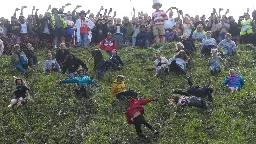
> Dairy-loving daredevils from around the world have descended on Cooper's Hill in Gloucestershire for the annual cheese-rolling race. > > Competitors ran, slid and tumbled down the near-vertical incline in an effort to catch up with a 7lb wheel of Double Gloucester - a semi-hard cheese renowned for its strong and savoury flavour. > > The rough-and-ready race is notoriously dangerous with bumps and bruises almost guaranteed for the many reckless cheese-chasers who tend to fall down the hill rather than run. > > ... > > The race begins when the so-called "Master of Cheese" rolls a Double Gloucester down the hill. > > The competitors then follow, with the first one to make it to the bottom getting to keep the cheese. > > This year's hill was especially slippery and muddy after recent rain. Members of a local rugby club lined up at the bottom to catch the tumbling competitors. > > Three men's downhill races and one women's downhill race took place between midday and 1:30pm. > > Winners of the three men's races included local man Josh Shepherd as well as competitors from Germany and Australia. > > American YouTuber IShowSpeed was among those who took part in one of the men's races - and paid a visit to the medical tent after suffering bruising on his way down the hill. > > Abby Lampe from North Carolina in the US won the women's race by rolling down the hill at speed that left the rest of the field far behind. > > "You just have to roll," said Ms Lampe, a graduate of North Carolina State University, who also won in 2022. > > She added: "There's a little bit of pain, but it's just going to be temporary." > > ... > > The annual cheese-rolling event in Gloucestershire is believed to have been taking place for centuries, though its exact origin is unknown. > > The first written evidence of the event was found in a message that was sent to the Gloucester Town Crier in 1826. > > However, it is said to have been an old tradition even back then. > > Some believe it started as a way of claiming grazing rights on the ground around Cooper's Hill - while others think it could have been a fertility ritual. > > Around 20 miles away from Cooper's Hill on Monday, competitors in the town of Tetbury carried sacks of wool weighing up to 60 pounds (27kg) over a 240-yard (220-metre) course up and down steep Gumstool Hill. > > The Tetbury Woolsack Races have been held since 1972, drawing on a local tradition dating back to the 17th century in the historic wool-trading town.
- In Pictures: Crowds gather to celebrate Beltain with burning of 40ft wicker manwww.shropshirestar.com In Pictures: Crowds gather to celebrate Beltain with burning of 40ft wicker man
Celtic Fire Festival: Burning the Wicker man took place at Butser Ancient Farm in Hampshire.
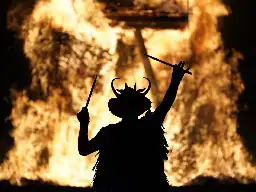
> Crowds gathered to mark the coming of summer with a traditional Celtic fire festival held at Butser Ancient Farm in Hampshire. > > The experimental archaeology site in Waterlooville hosted the burning of a 40ft wicker man at dusk to mark the pagan quarter-day farming celebration of Beltane or Beltain, which has connections to later May Day celebrations. > > The May Queen and Green Man were in attendance, as were members of the Pentacle Drummers who performed in front of the burning wicker man.
- Padstow's 'Obby 'Oss festival returnswww.bbc.com Padstow's 'Obby 'Oss festival returns
One of the UK's oldest surviving festivals is taking place in Cornwall.
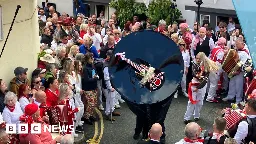
> One of the UK's oldest surviving festivals has taken place in Cornwall. > > May Day in Padstow is a celebration of the Celtic feast of Beltane, which pays tribute to the fast approach of summer. > > Padstow's narrow streets were at the heart of the party. > > There was a procession with dancers, drums, and music makers and the celebrations went on until midnight. > > Padstow's two 'Obby 'Oss - wooden hobby horse costumes - are paraded through the town for the celebrations every year. > > The ancient tradition has brought thousands of people to the streets of the town, cheering for either the blue or red ribbon hobby horses. > > ... > > The exact origin of the centuries-old 'Obby 'Oss celebration is unknown, however it is thought it could be linked to the ancient Celtic festival of Beltane. > > It sees the 'Obby 'Oss dance through the streets of Padstow to welcome the coming of summer. > > ... > > In 2019, a woman died after being struck by one of the wooden costumes. > > Laura Smallwood, 34, was hit by the blue-ribboned 'Oss. > > She died at Derriford Hospital three days after the Padstow celebration. > > An inquest recorded a conclusion of accidental death.
- Beltane Fire Festival: Raving the night away in celebration of May Day and the start of summerwww.scotsman.com Beltane Fire Festival: Raving the night away in celebration of May Day and the start of summer
Beltane is held each year on the last day of April
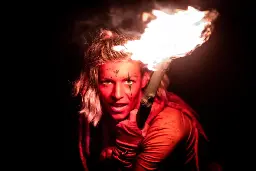
> Bonfires, blazing torches, body-painted dancers, drummers, jugglers, musicians, fire-eaters, ancient Celtic rituals and a spectacular backdrop. > > No, it’s not a scene from cult film The Wicker Man. > > It’s what you can expect at the annual Beltane Fire Festival taking place in Edinburgh capital this week. > > Beltane is held each year on the last day of April, continuing overnight into May Day, to mark the arrival of summer and celebrate new life and fertility. > > The event, which first began in 1988 as a protest against rave laws and a way to reclaim green spaces, includes modern interpretations of rituals and customs with roots dating back to the Iron Age. And fire. Lots of fire. > > The May Queen, as her name implies, presides over the show, guiding a procession of drummers and performers around the city’s landmark Calton Hill and acting out healing rites. > > During her journey she interacts with the Green Man in ceremonies symbolising the birth of summer.
- Knutsford Royal May Day: Story of the 160-year-old traditionwww.knutsfordguardian.co.uk Story of the 160-year-old tradition which brings crowds to town each year
Knutsford May Day festivities usually take place on the first Saturday of May each year and are the highlight of the town’s annual events.
> Knutsford May Day festivities usually take place on the first Saturday of May each year and are the highlight of the town’s annual events. > > ... > > Funding for May Day is largely by donation, and each year, it is a struggle to ensure 'the show goes ahead' with much effort and dedication from the organisers. > > It first took place in 1864 when the May Queen was Annie Sarah Pollitt, aged 14, the daughter of the licensee at the Lord Eldon pub. > > Interestingly, Annie married Edwin Jackson in 1870. Although she started married life running a pub called the Crown Inn in Dukinfield, she later moved to the Feathers in Knutsford, located just next door to the Lord Eldon. > > There are many rumours that Annie haunts the Lord Eldon, with reports of flickering lights, moving objects, a white apparition, and unidentified cold draughts. > > ... > > A fair and Morris dancing takes place on the Heath, and many attendees wear fancy dress with historical and elaborate outfits. > > ... > > Another tradition that still takes place is the ‘sanding’ of the streets. It is a unique custom where coloured sand decorates the pavements, portraying mottos, symbols, and pictures. > > Members of the same family have undertaken it for many years. Sanding was performed in Knutsford long before May Day was introduced to celebrate weddings. > > It is believed that King Canute started the custom 900 years ago when he sat down to shake sand from his shoes just as a wedding party were passing by. He wished them much luck in their marriage as the sand scattered across their path.
- Sci-fi scarecrows on show in annual Wray village eventwww.bbc.com Sci-fi scarecrows on show in annual Wray village event
More than 50 sci-fi scarecrows are on display for the annual Wray Scarecrow Festival.
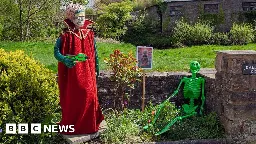
> A village has been taken over by popular sci-fi figures replicated in scarecrow form, including E.T. and the Daleks from Doctor Who. > > More than 50 installations are on display for the annual Wray Scarecrow Festival in Lancashire. > > One of the organisers, John Gordon, said: "There are quite a few E.T.s around - on the bike, of course. > > "We've got a number of Daleks, characters from Star Wars, and there's an amazing one from Planet Of The Apes." > > ... > > Mr Gordon added: "There was one person who had his family eating yoghurts for two weeks so they could get the all pots to stick on a Dalek." > > ... > > The festival - which began in the early 1990s - has an origin story as quirky as the scarecrows on offer. > > "It started off by accident," Mr Gordon said. > > "One of our people who lives here had gone to France on holiday and they saw what they thought was a man hanging off a tree and they were a bit worried about that, so they went into the local village to see what was happening and they noticed there was a scarecrow stuck on a bar outside the local pub. > > "Wray is a very old traditional village and its had a May fair for centuries and they thought it would be a nice idea to add this to the May fair, so they persuaded one or two people to make scarecrows and it just took off from that. > > "It was a momentary flash of brilliance." > > ... > > The festival runs until 6 May, culminating with a traditional May fair including a giant scarecrow parade on 3 May.
- Church with oldest written reference to morris dancing in Sussex funds apprentice bells for Sompting Village Morriswww.sussexexpress.co.uk Church with oldest written reference to morris dancing in Sussex funds apprentice bells for Sompting Village Morris
A Worthing church has marked its near 500-year link to morris dancing with a donation to Sompting Village Morris for apprentice bells.
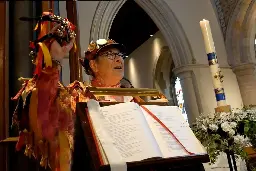
> The church has what is believed to be the oldest written reference to morris dancing in Sussex. > > Martin Frost, spokesperson for SVM, said: "The 1561 records of St Andrew's Church, West Tarring, mention the oldest written reference to morris dancing in Sussex with a five shilling payment for their bells. > > "To mark this 500-year link, a very timely and much-appreciated donation to Sompting Village Morris was presented at the Sunday service to help fund our 2024 apprentice bells." > > The dancers were delighted to receive the donation on April 14 and Martin took to the microphone to explain the link between the Tarring Parish accounting and a local morris dancing side. > > He said: "We have been dancing for at least 40 years, which is nothing compared to the connection that we have with this church, which we discovered a few years ago. > > "According to the parish records, there was a donation made by the churchwarden. It seems very appropriate to re-enliven this tradition and we will be very happy to have this small donation for the cost of the morris bells for this season's apprentices."
- Weird Walk
I thought I'd posted about this before but it's now come up a couple of times on here:
> Formed in the hinterland between the bucolic and the eerie, Weird Walk began as three friends walking an ancient trackway across southern England wearing incorrect footwear. Being out in the countryside for extended periods, away from screens and distractions, not only refreshed our brains but sparked a creative enthusiasm for the countless stories in the landscape that we yomped across. We spent three transformative days and nights on the Wessex Ridgeway, stopping off at Neolithic burial chambers, sacred hills, Iron Age earthworks, misreading maps, and sleeping in haunted pubs, all the while slowly becoming aware that the further from the towns and cities we walked, the wider the temporal boundaries grew. > > Here was the land of Silbury Hill and Avebury stone circle, of Wayland the Smith and the great Uffington White Horse, whose annual scouring is a true pagan survival; here also was the land of the druids, the first farming communities, the last Saxon kings, and countless age-old folk tales. It was a potent path indeed, and the trip soon led to others. > > By walking the ancient paths, visiting the sacred sites, and immersing ourselves in the folklore and customs of these isles, we hope to fan the faint embers of magic that still smoulder in the grate and conjure that elusive temporal trackway of history and mystery, a weird walk that bypasses nostalgia and leads us back towards optimism and re-enchantment.
They have also released a few zines amd then a book (which I stumbled across in a shop a few months ago but have yet to pick up a copy - which I'll rectify now)
- Ancient tradition [the Hallaton Bottle Kicking game] 'means everything' to Leicestershire villageswww.bbc.co.uk Ancient tradition 'means everything' to Leicestershire villages
Legend has it that 'bottle kicking' has been taking place for the last 2,000 years.

> A Leicestershire man who has been running an ancient bottle kicking event for 50 years said it "never ceases to amaze" him. > > Phil Allan, chairman of the organising committee, believes the Hallaton Bottle Kicking game is the "oldest continuing sporting event in Britain". > > Two teams from the villages of Hallaton and Medbourne compete to move two of three barrels to the opposition's stream. > > The event takes place on Easter Monday. > > Mr Allan told the BBC: "Legend has it, it's probably been going on for 2,000 years. > > "People who come for the first time and see the event just cannot believe how unusual it is. > > "The whole area is charged with an electric atmosphere." > > The event is preceded by a parade of a hare pie, which is handed out to spectators by the village rector. > > ... > > "People can't believe how rough it is," Mr Allan said. > > "Of course, there are injuries. Quite often there's some broken legs, collarbones. I guess that's part of the taking part."
- Unusual folklore festivals, ceremonies and events taking place at Easter
They include:
Good Friday
Bun Ceremony
- The Widow’s Son Tavern, Bromley-by-Bow, London
- For over two hundred years a bun has been added every Good Friday to a collection preserved at the Tavern. The name and the custom derive from an 18th century widow who hoped that her missing sailor son would eventually come home safely if she continued to save a bun every Easter.
Pace-Egg Play
- Upper Calder Valley, Yorkshire
- A traditional masked mime or mumming play, based upon the legend of St George and featuring such colourful characters as Toss Pot. The pace-egg being the Pasch or Easter Egg.
Easter Saturday
The Nutters’ Dance
- Bacup, Lancashire
- Not a traditional Morris Dance as such, this most unusual dance is performed by an eight-man team with blackened faces and wearing black and white costumes with wooden cups attached.
Easter Monday
Biddenden Dole
- Biddenden, Kent
- Biddenden cakes are distributed as part of an ancient charity known as the Biddenden Dole. Each cake bears a picture of two females who are joined on one side. These are said to be two sisters who bequeathed money for the Dole of beer, bread, cheese and cakes. Legend records their names to be Eliza and Mary Chulkhurst, Siamese twins who were born in 1100 joined together at the shoulder and hip. When one of the sisters died at the age of 34 the other refused to be separated from her and died six hours later. They left 20 acres of ground called the Bread and Cheese Lands to provide money for the Dole.
Bottle-kicking and Hare Pie Scramble
- Hallaton, Leicestershire
- The proceedings start with the parading of a giant hare pie. Hallaton’s vicar emerges from church and blesses the pie. Great greasy handfuls of it are thrown into the hungry scrambling crowd. After that, things get even sillier … The Bottle Kicking contest between Hallaton and nearby Medbourne can commence. Confusingly, this involves neither bottles nor kicking. Instead the two village teams face each other at Hare Pie Bank and fight over three small beer barrels, which have been decked in ribbons. The casks are released in turn, and the opposing teams attempt to roll or carry them to their village boundary. The scrum is rules-free and notoriously bloodthirsty. The whole event can last for hours, with the both teams sharing the beer contained within the final cask.
- Bottle Kicking is recorded as early as 1770, but its origin is thought to be much older. It is believed to be linked to the sacrifice of the hare in the Dark Age worship of the goddess Eastre.
- In 1790, the rector tried to ban the event because of its pagan origins — the next day graffiti appeared on the vicarage wall: “No pie, no parson.” Unable to beat them, the church joined them.
Running Auction
- Bourne, Lincolnshire
- In 1742 Mathew Clay bequeathed a piece of land, the rental income from which was to be used to buy white bread for the poor folk of the Eastgate Ward. The land is let from year to year and Clay stipulated that the winner of the following years tenure should be decided by a running auction. The auctioneer starts two boys running and as soon as they have set off, the bidding for the grazing rights begins but can only go on until the boys return and then the highest bid made just before the race ends becomes the tenant for the following year. The rental money now goes to a local charity but in 1968, one of the last times that bread was actually distributed, around 350 loaves were handed out from the proceeds of the charity which then amounted to £13.
The World Coal Carrying Championship
- Ossett, Nr. Wakefield, Yorkshire
- A tradition that dates back to the dark ages of 1963, when one local man challenged another local man in the middle of their local, the Beehive Inn, is now an annual contest of stamina and muscle. The main event, the men’s contest, starts at The Royal Oak, from where competitors, each carrying 1cwt. of coal, have to run nearly a mile as quickly as possible, before being allowed to drop the “secks ‘o’ coil ” (Yorkshire dialect for sacks of coal) at the foot of the Maypole, which stands on the village green. The current and world record is 4mins. 6secs
Second Tuesday after Easter
Hocktide Festival – Tutti Day
- Hungerford, Berkshire
- Though once widespread throughout Britain, Hungerford is now the only place in the country still to maintain the annual Hocktide festival. The festival dates from the 14th century when Prince John of Gaunt gave the rights of free grazing and fishing to local ‘commoners’.
- The town-crier blows his horn and calls together the Hocktide Court in the town hall. Here, all commoners living in the High Street must pay a fine to ensure their rights of fishing and grazing. While the court continues, “Tutti-Men” or Tithe Men (originally rent collectors), with florally decorated poles are led through the streets by the “Orange-Man” to collect a coin from the men and kisses from all the ladies resident in the High Street. They receive an orange in return. Various traditional suppers, lunches and balls follow.
Ascension Eve
Planting the Penny Hedge
- Whitby, Yorkshire
- In this ancient festival wooden stakes are cut and carried through the town at sunrise to the shore, where they are woven into a strong hedge before the tide turns. The name Penny Hedge is thought to derive from Penance Hedge.
- The ceremony is said to date back to 1159 when the Abbott of Whitby imposed a penance on three hunters and their descendants for murdering a hermit with wooden staves. The hermit was protecting a boar they were chasing. To save themselves from execution they had to agree to construct a stake hedge strong enough to withstand three high tides every year until their descendants had died out. Sir Walter Scott recorded the legend in his novel Marmion.
- Royal Shrovetide Football 2024 - the craziest football game
From The Derbyshire Telegraph:
> Ashbourne Royal Shrovetide Football is said to be the last surviving example of mass football and is one of only a handful of games of its kind to be played annually in the streets of the UK. There are records of mass football being played as early as 1667, but Ashbourne Royal Shrovetide's origins are unknown due to a fire at the Royal Shrovetide Committee office in the 1890s, which destroyed the earliest records. > > But we know the modern game follows a very similar format to how it would have looked centuries ago, with tradition at its core, and sportsmanship and rivalry at its beating heart. Every Shrove Tuesday and Ash Wednesday the town is divided by the Henmore Brook. Traditionally, those born north of the river are Up'ards, and those born south of it are Down'ards. > > These two sides lock horns on both days, with the game starting at 2pm when an invited local man is given the honour of "turning up" the ball from a plinth in Shaw Croft Car Park. Unlike a conventional football match, the game takes place over two eight-hour periods, the goals are nearly three miles apart at former mills and there are few rules. It's better compared to rugby, with a huge, steaming hug at its centre, not unlike a rugby scrum. > > While there are literally thousands of people crammed into the small market town during the two days, the number of players actually taking an active role in pushing the game towards their mill is perhaps in the hundreds, with a core of just dozens who were born into Shrovetide and have a chance at getting the ball to a goal. > > ... > > The match continues until 10pm. If the goal is scored (goaled) before 6pm a new ball is released and play restarts. However, play ends for the day if a ball is goaled after 6pm. To goal a ball the players must first reach the sites of the former mills, and then jump into the river and hit the ball against a mill stone, mounted in a plinth, three times. And it could take hours for the hug to push all the way to the goals.
- The Tradfolk Wassailing Directory. Where to get your wassail on.
Apple wassailing was traditionally held in cider-making communities, so you’re more likely to find wassails in the West Country, or in the Welsh border counties. That said, it appears to be a popular tradition that increasing numbers are returning to, and – like many great traditions – is spreading across England at quite a pace.
In creating this directory of wassails, many of the organisers were first-timers, suggesting that this tradition increasingly holds meaning for many people who may be coming to it anew. People seem to be keen to connect to the land in a way that we’ve perhaps not seen for some time. Whatever the reason, it’s certainly nice to be involved in something that is non-digital, allowing the participants to look up, gaze around them, and really notice the wheel of the year.
- Up Helly Aa
Up Helly Aa is a tradition that originated in the 1880s. Since then the festival has been an annual occurrence in the Shetland calendar. The festival is cancelled by exception, the following dates record when and why:
1901 Death of Queen Victoria 1914 to 1919 First World War 1940 to 1948 Second World War 2021 to 2022 Covid-19 Pandemic
There have also been postponements as listed below:
1900 2 weeks due to influenza 1936 2 weeks due to death of George V 1965 1 week due to the death of Winston Churchill
Up Helly Aa is many things to many people, throughout the day there are experiences a plenty to be had by all from the celebration of our history, the sight of the Guizer Jarl and the Jarl Squad marching through the town followed by their galley to the evening party atmosphere in the halls.
- Whittlesea Straw Bear
Just too late for this one this year.
- Horse skulls and harmony singing – two winter customs which bring people in Wales togethertheconversation.com Horse skulls and harmony singing – two winter customs which bring people in Wales together
The Mari Lwyd and the plygain are two prominent Welsh traditions celebrated over Christmas and the new year.
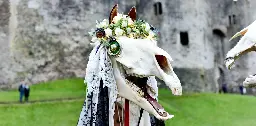
- Unleash the Burryman! Britain's weirdest folk ritualswww.theguardian.com Unleash the Burryman! Britain's weirdest folk rituals
A fanatical folklorist has spent a lifetime cataloguing Britain’s strangest rites. He picks his five favourites, from blazing barrels and sacred pies to a May Day ceremony bigger than Christmas

We've previously mentioned Doc Rowe and his impressive archive of records and here's an.earlier article looking at a few of.the weirdest customs he's catalogued:
> Rowe, now 74, has almost certainly attended and documented more folk rituals than anyone else alive. He maps out his year according to calendar customs: by the time you read this, he’ll be in Padstow for the town’s Obby Oss festival, which takes place on May Day. It’s his 57th visit. > >NRowe’s trove is the subject of a new exhibition, Lore and the Living Archive, opening shortly in Rochdale. Three young artists have created work in response to his collection and this will be displayed alongside his own film footage and stills. “People often think of these traditions as being rather twee,” he says. “Little girls in white dancing round maypoles. But they are very far from that.” > > To prove the point, we asked him to describe five of the most memorable …
- Oasby Baboon Nighttraditionalcustomsandceremonies.wordpress.com Custom contrived: Oasby Baboon Night
“You want to go to Baboon Night” said Barry “Baboon what?” I said? “Baboon Night its near Grantham….they chase a baboon around the village.” He added. Now knowing Barry’s obsession with the w…
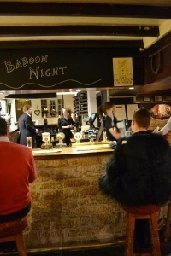
> Oasby is a small village just outside what was once voted the most boring town in England, Grantham..however Baboon Night or more correctly Baboon Tossing Night is far from being dull and lightens, quite literally, a rather cold and dull Friday in November. > > The custom is linked to a local legend; involving a pet baboon and the local land owner’s son who is said to have died at the hands of the monkey. The event dates back to 1723, when Sir Michael Newton, (relative of the more famous Isaac) kept a pet baboon at Culverthorpe Hall. It is said that when his son, Viscount Conningsby, was only only six months old, the pet threw from a window! What the instant reaction of the family is unrecorded by the son was duly buried in the chapel. The baboon? He appears to have been granted a mini mausoleum on an island on the estate. Although he was killed as a result of the incident I do believe. > > ... > > around 15 years ago, a local Morris team, who drank at the delightful Houblon Inn, thought it was a good idea to celebrate it or rather to drive the spirit of the creature out to placate the spirit of the young child. So they created their own custom and an eccentric one it is too! I was told by the organiser that the custom combines a number of customs, a sort of omni tradition including souling, fire based celebrations and riding the stang, indicating the folklore literacy of the organiser. The event always on the Friday when Children in Need is on is perhaps a rare example of such a folk custom being directly linked to a national TV event. Although no one appeared get the rather bizarre notion of a baby killing monkey being ‘celebrated’ on Children in Need night, although as it was clearly to remove the monkey I suppose it was defending it!
I can find no information on whether this is happening this year but Children in Need is on Friday 17th November. You should probably phone the pub before going.
- Photographs by Rachel Adams reveal a new generation of Morris dancers

While living in Southampton and working at a local newspaper, photographer Rachel Adams, to her delight, discovered a new generation of Morris dancers performing at pubs, events and festivals. The fresh choreographed figures jumping up and down to music, clad in costumes covered in bells, and waving handkerchiefs and bashing sticks sparked her curiosity. She wanted to know more about what these young people found so intriguing about this English folk tradition, which usually has a bad reputation.
- Turn the stone to keep the devil away: Bonfire Night in a Devon villagewww.theguardian.com Turn the stone to keep the devil away: Bonfire Night in a Devon village
In Shebbear, bellringers, a speech by the vicar and a hog roast combine in a fokloric ritual aimed at averting disaster
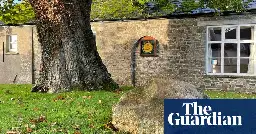
> A peal of clashing bells echoes across the hills. Hundreds of rooks roosting in the cemetery trees splutter into the darkness. At 7.45pm on 5 November, St Michael’s church bells ring out in discord across the village of Shebbear, in rural west Devon overlooking the Dartmoor hills. On Bonfire Night here, there aren’t fireworks, there isn’t even a bonfire. Instead, there is a stone. > > Beneath an ancient oak in Shebbear’s village square is the Devil’s Stone. It’s a sarsen – a foreign stone not from this area. The boulder is thought to be quartz composite, where the local geology is predominantly sandstone and shale. No one attending the ritual turning of the stone on 5 November is bothered what it’s made of. It’s that the stone is turned that matters. > > Shebbear’s vicar, Reverend Martin Warren, plays a leading role in the ritual. He says the legend of the Devil’s Stone is that it was dropped upon the devil after a celestial battle with the archangel Michael, trapping him in Shebbear. It is turned every year to avert disaster, Martin says, and ensure he doesn’t “wriggle out from under it”. > > ... > > There are various theories about how the stone arrived in Shebbear, but the most likely is that it was deposited by glacial ice, as there are similar “erratic” stones nearby. As to its purpose historically, many believe it is the remnants of a pagan altar stone. It is also thought an Anglo-Saxon parliament gathered around it, since Shebbear was the centre of an Anglo-Saxon “hundred” – the division of a shire for military and judicial purposes under the common law. > > Revelations – both pious and heathen – often happen on hilltops with their clear views of the heavens, and Shebbear is at the top of a hill almost 150 metres above sea level. A hilltop with a huge, strange stone would have been an auspicious site for rituals. As to why people started turning it, that’s another mystery. “Anybody who says they know is telling porkies,” Ron says. > > The ritual is said to be one of the oldest folk traditions in Europe. Although there is no evidence of the turning before the 20th century, Ron says, “I only turned the stone for about 20 years, and my dad only did it for about 45 years – like the men before.” (The stone has been left unturned twice in living memory, during the two world wars. In the second world war, despite blackouts, this was swiftly rectified to avoid further misfortune.)
- Lewes Bonfire 2023 Livewww.youtube.com Lewes Bonfire 2023 Live
Join Alex and Helen from Rocket FM as they broadcast live from above the War Memorial on School Hill in Lewes for the bonfire celebrations on 4th November 20...

Police ask that only local people attend although the population of the town doubles anyway, however, there is a live stream and, while no longer live (I'll try and do better next year), you can still watch the stream.
If you jump forward to 1 hour 8 minutes the events start shortly after some WW1 soldiers have a chat with a Saxon. First crosses are lit about 1 hour 18 minutes in.
- Cheese-rolling, straw bears and weird rituals galore: one man’s mission to record all of British folklorewww.theguardian.com Cheese-rolling, straw bears and weird rituals galore: one man’s mission to record all of British folklore
A treasure trove devoted to folk traditions has been amassed by one man. Now a campaign hopes to give it a proper home
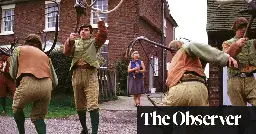
Fans of British folklore are championing a campaign to safeguard a unique archive cataloguing traditions from Britain and Ireland. The collection – of more than 20,000 books, 4,000 tape cassettes and 3,500 hours of reel-to-reel audio – has been amassed by one man. David “Doc” Rowe is a 79-year-old folklorist who has travelled the UK since the 1960s, visiting calendar customs such as the Straw Bear Festival, the Krampus Run or the Hunting of the Earl of Rone.
Director Rob Curry and actor/director Tim Plester set up the crowdfunder, which has been supported by Eliza Carthy, Alan Moore and Neil Gaiman. The co-directors previously collaborated on two acclaimed documentaries about the British folk scene – Way of the Morris and The Ballad of Shirley Collins. They started work at the end of lockdown on a film about Rowe and his annual odyssey around the rituals of Britain, then expanded the project to help him find a permanent home for his archive.
- Pagan origins of Halloween and Bonfire Night: from the archive, 31 October 1906www.theguardian.com Pagan origins of Halloween and Bonfire Night: from the archive, 31 October 1906
Originally published in the Manchester Guardian on 31 October 1906: Originating in pagan times, many rituals associated with All Hallows' Eve have been transferred to Bonfire Night
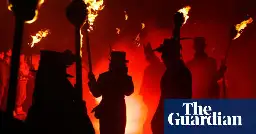
> Lovers of old customs lament the disappearance of the old customs associated with All Hallows' Eve, but it is forgotten that two of the chief pieces of ritual, the lighting of fires and the eating of cakes, have been transferred from October 31 to the 5th of November. > > Long before the Gunpowder Plot affair, bonfires were lighted on the hilltops of Ireland and Scotland; Sir John Sinclair in his Statistical Account of Scotland, published in 1793, mentioned that in the Highlands bonfires used to be lighted and consecrated cakes baked on the 1st of November (the first day of winter), and also on the 1st of May (the first day of spring). In North Wales the autumnal fire was called Coel Coeth; it was accompanied by such ceremonies as leaping through the fire (as on St. John's Eve in Germany and other countries), throwing nuts in the fire, and biting at apples suspended from a string. One sometimes sees people leap across a half-consumed bonfire on the 5th of November, saying in excuse that it was an old custom. > > Even the parkin and toffee of the 5th of November may be relics of the ceremonial cakes formerly offered - perhaps a symbol of sacrifice dating from pagan times. On All Hallows' Eve "soul-cakes," a kind of oatcake, used to be given to the poor in Catholic Lancashire, and Yorkshire parkin, a compound of oatmeal and treacle, is perhaps a development of the soul-cake. In parts of Yorkshire All Hallows' Eve is still called "cake night," and an old Halloween custom everywhere was "going a-soul-ing," or begging for soul-cakes. In remote parts of the Highlands and of Western Ireland it used to be customary to provide cakes for the souls of the departed on All Hallows' E'en, that being the only night upon which they could speak and eat.
From Thomas Hardy's The Return of the Native:
> While the men and lads were building the pile, a change took place in the mass of shade which denoted the distant landscape. Red suns and tufts of fire one by one began to arise, flecking the whole country round. They were the bonfires of other parishes and hamlets that were engaged in the same sort of commemoration. Perhaps as many as thirty bonfires could be counted within the whole bounds of the district. > > It was as if these men and boys had suddenly dived into past ages, and fetched therefrom an hour and deed which had before been familiar with this spot. The ashes of the original British pyre which blazed from that summit lay fresh and undisturbed in the barrow beneath their tread. Festival fires to Thor and Woden had followed on the same ground and duly had their day. Indeed, it is pretty well known that such blazes as this the heathmen were now enjoying are rather the lineal descendants from jumbled Druidical rites and Saxon ceremonies than the invention of popular feeling about the Gunpowder Plot. > > Moreover to light a fire is the instinctive and resistant act of man when, at the winter ingress, the curfew is sounded throughout Nature. It indicates a spontaneous, Promethean rebelliousness against that fiat that this recurrent season shall bring foul times, cold darkness, misery and death. Black chaos comes, and the fettered gods of the earth say, Let there be light.
And we'll pop over to Wikipedia for a quick summary:
> Historians have often suggested that Guy Fawkes Day served as a Protestant replacement for the ancient Celtic festival of Samhain or Calan Gaeaf, pagan events that the church absorbed and transformed into All Hallow's Eve and All Souls' Day. In The Golden Bough, the Scottish anthropologist James George Frazer suggested that Guy Fawkes Day exemplifies "the recrudescence of old customs in modern shapes". David Underdown, writing in his 1987 work Revel, Riot, and Rebellion, viewed Gunpowder Treason Day as a replacement for Hallowe'en: "just as the early church had taken over many of the pagan feasts, so did Protestants acquire their own rituals, adapting older forms or providing substitutes for them". While the use of bonfires to mark the occasion was most likely taken from the ancient practice of lighting celebratory bonfires, the idea that the commemoration of 5 November 1605 ever originated from anything other than the safety of James I is, according to David Cressy, "speculative nonsense". Citing Cressy's work, Ronald Hutton agrees with his conclusion, writing, "There is, in brief, nothing to link the Hallowe'en fires of North Wales, Man, and central Scotland with those which appeared in England upon 5 November."
- Middleton, Suffolk - The Cutty Wren Ceremony
The annual ceremony of the Cutty Wren was revived by Old Glory Molly Dancers and Musicians, together with folklorist Pete Jennings, on St. Stephen's day (26th December), 1994. The village of Middleton, in East Suffolk, is believed to be one of the last places in England where the ritual of the hunting of the Cutty Wren ("cutty" means small) could be seen at the beginning of the 20th century.
Further info - and video - at Calendar Customs.
- Cool as folk: why Britain’s young rebels are embracing ancient riteswww.theguardian.com Cool as folk: why Britain’s young rebels are embracing ancient rites
Folklore customs dating back centuries are suddenly cool with a new generation keen to connect with the planet and defy the establishment
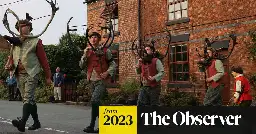
> If you’ve never danced with the “obby oss” or been daubed by a bogie, then a new show at Compton Verney art gallery in Warwickshire is for you. Making Mischief is the first exhibition dedicated to British folk costume and the traditions celebrated by communities all over the UK. > > There you can learn about the game of Haxey Hood played in Lincolnshire each January or Padstow’s May Day celebrations and the stylised obby osses that lead the celebration. Or there’s the Jack in the Green festival in Hastings where the bogies splatter onlookers with green paint. > > Making Mischief’s aim is not just to document community folklore traditions but also to show how they are revived and updated for the modern world – one that includes female morris dancers and LGBTQ+ performers. The Jack in the Green festival has featured gay bogies for the last 30 years. These changes come thanks to the growing interest from new, younger generations in making the customs their own. > > ... > > Folk traditions echo through many new elements of popular culture. As well as the current wave of folk horror films, including box-office hit Enys Men, there are club nights starting up such as Klub Nos Lowen, which champions Cornish folk music and dance, and breakout folk music stars such as Gwenno, who has released albums in Welsh and Cornish and was nominated for the 2022 Mercury prize. New clubs and social groups are also bringing like-minded people together. > > Stone Club, founded by artists Lally MacBeth and Matthew Shaw in 2021, organises walks and gatherings for people fascinated by prehistoric pagan Britain. There’s also the Wiltshire-based magazine Weird Walk, which was started in 2019 by musician Owen Tromans, designer Alex Hornsby and James Nicholls who runs a record label. It’s dubbed a “journal of wonderings and wanderings” and showcases writing about Britain’s pathways, ley lines and mystical histories. > > Contributors include comedian and Observer columnist Stewart Lee and artist Jeremy Deller. Art is Magic, a book of Deller’s work to be published in May, will feature his exhibition of folk art, and Sacrilege, his bouncy castle Stonehenge. > > “People are drawn to ancient sites, stories and traditions,” says Weird Walk co-founder Hornsby. “Sacred landscapes and their lore offer respite, reconnection and an enjoyable yomp. There’s usually a decent pub nearby, too. Someone recently told me that in previous years their mates used to post about going to gigs or to football on the weekend, then all of a sudden it was hikes up mountains and rituals at standing stones … folklore and ancient history is gaining a foothold in the era of social media.”

